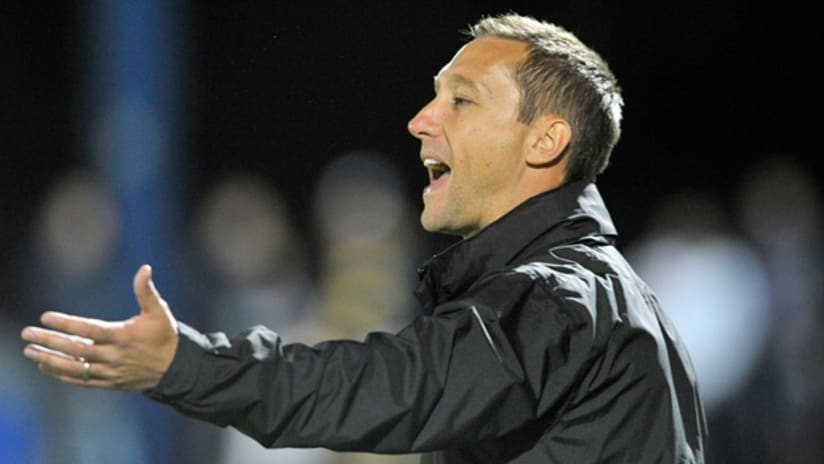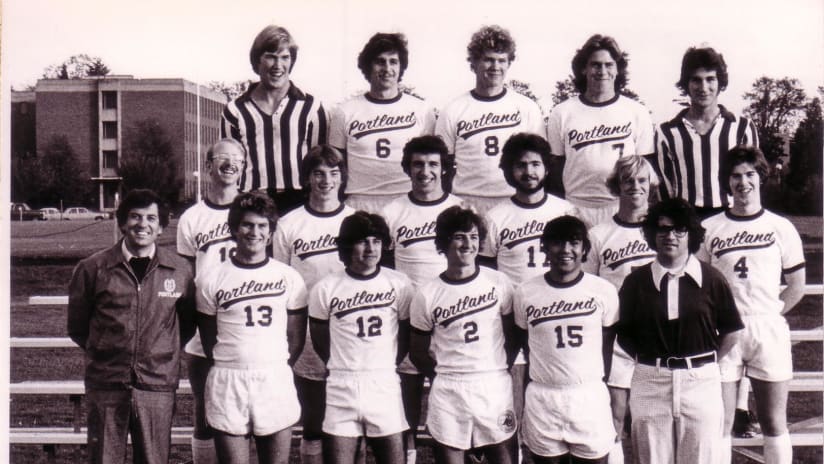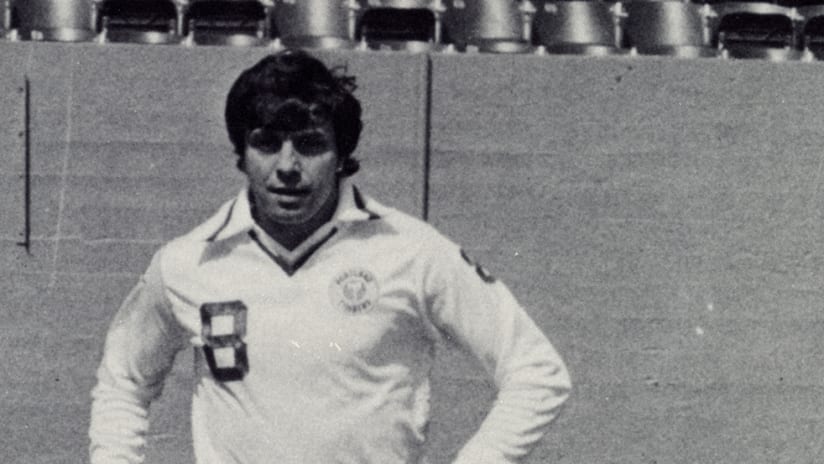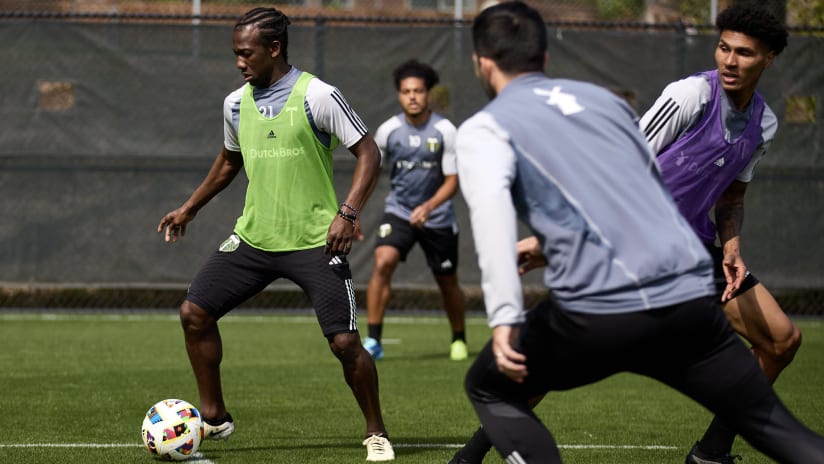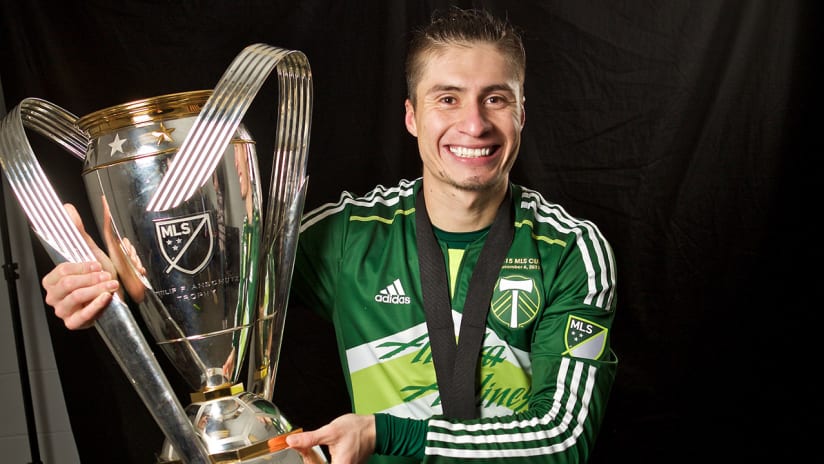This past Saturday night, the U.S. National Team’s Teal Bunbury fired a low penalty shot past the Chilean goalkeeper in the 72nd minute in a friendly at Los Angeles’ Home Depot Center. The goal capped a game that showcased a young and plucky U.S. side eager to usher in a new generation of American players.
A year ago, Bunbury was freshly drafted by Kansas City in the 2010 MLS SuperDraft with the fourth overall pick. After a stellar career at the University of Akron under the expert tutelage of Zips head coach Caleb Porter, Bunbury made the jump to the pros.
While Bunbury was taking on Chile over the weekend, his one-time teammate at Akron, Darlington Nagbe, found himself meeting with Timbers coaches in preparation for his first MLS training camp. Nagbe, like Bunbury, is a Hermann Trophy Award winner, and was taken with the second overall pick in the 2011 MLS SuperDraft—one of five Akron players taken in the first round and one of seven taken total in the day’s three rounds.
What is it about Akron, and more specifically, Porter, that makes that small school a factory of top-flight soccer talent?
“We like soccer players at Akron,” Porter said simply.
But in Nagbe, the Timbers have acquired a player that his ex-coach Porter believes is something truly special.
“His pure skill is arguably the best I’ve seen in college as a coach—even when I was a player,” said Porter.
Considering that Porter has created the winningest active collegiate program in the country over the past five years, that’s saying something.
“The next level, that’s what it takes,” Porter said. “You’ve got to be composed, confident, you’ve got to be able to get out of pressure. You’ve got to have creativity, and he has that. He’s got God-given talent.”
And while Porter has coached players from Seattle’s Steve Zakuani to 2011 MLS SuperDraft No. 3 overall pick Perry Kitchen, there is also an energy Nagbe brings that is unique.
Said Porter, “He plays with a passion that I don’t see a lot of American kids play with. He’s a very humble kid, very quiet, but on the field he comes to life.
“In addition to that, it’s his athleticism. So really, it’s the two things: it’s the skill and the athleticism that I think are top, top in. Those two things combined make him a game-changer.”
But as good as all the players are at Akron, Nagbe didn’t just sprout forth from nowhere. Nagbe’s father was an accomplished player with a pro career that took him to Greece, Switzerland and France in addition to his 96 caps for the Liberian National Team.
As Porter puts it, “[Nagbe’s] grown up around the game literally . . . Darlington traveled the world from a little kid on up and I think that was a big part of why he is as good as he is. He was always around it; it’s kind of in his blood.”
Given Nagbe’s childhood globe-trotting ways, it was the old adage of location, location, location that eventually brought him to Akron and Porter. Nagbe’s family settled in Cleveland when he was a teenager. Shortly thereafter, Porter became head coach at Akron.
Wanting to get a feel for the area, Porter had reached out to one of the university’s alum’s, George Nanchoff—father of 2011 SuperDraft Vancouver Whitecaps eighth overall first rounder and Akron Zip Michael Nanchoff.
“When I got the job, I called George,” said Porter. “I asked him who were the top players and he immediately said, ‘Darlington.’”
Nanchoff had seen Nagbe play in a Sunday soccer league and after telling Porter about him, Porter went out to see him.
“I was absolutely mesmerized by this kid. I remember vividly, I called Brian Maisonneuve who was [an assistant] Youth 17 National Team coach at the time—he’s now an assistant at Indiana—I called him from the field and said, ‘This is the best youth player I’ve ever seen.’ Nagbe was 15 years old at the time. The stuff that he was doing on the field, I’ve never seen any youth player do.”
Continued Porter, “It reminded me a lot of when I was watching Freddy Adu in one of the regional tournaments. [Nagbe] was just a man among boys. But Darlington didn’t do it with necessarily the power and the pace. In this country, those kids that have those things at a young age, dominate with those things. And then they peak out. But with Darlington, it was the skill.”
That abundance of skill was something that remained and became even more pronounced as Nagbe developed at Akron under Porter’s watchful eye.
“There are things in training that he does that I’ve seen him do and in games and I almost just start laughing,” Porter said. “It’s just, it’s unbelievable. That’s exciting. And that’s a part of the game . . . entertaining, right?”
And while it doesn’t hurt that Nagbe was surrounded by a tremendous collection and concentration of top American soccer college talent, his statistics were relatively modest for someone who is so heralded—seven goals and 13 assists in his junior year.
And yet, as Porter puts it, “There’s a reason he was Hermann Trophy Player of the Year. It’s not always about the goals and assists, it’s about the little things that he does . . . the subtle touches, change of pace, the balance, the way he turns . . . little things. He slips a guy in, flicks a ball over a guy’s head and goes, it’s a different level. You’ve just got to watch it. As soon as you watch it, if you know the game, it’ll take 10 seconds to be like, ‘That’s a different player.’”
Feature
Caleb Porter says Nagbe is "The best I've seen in college as a coach"
